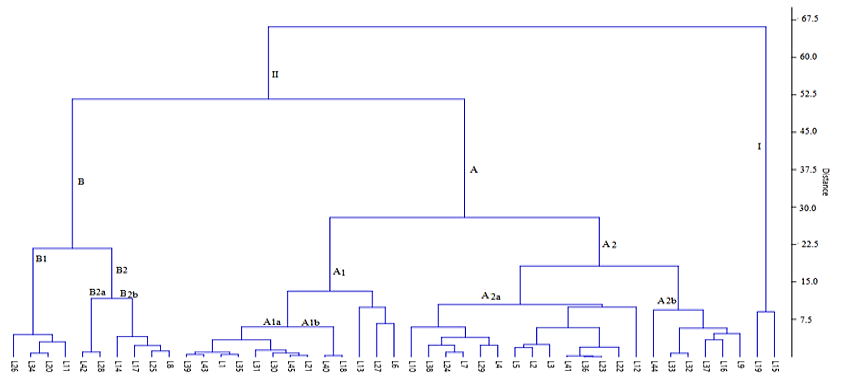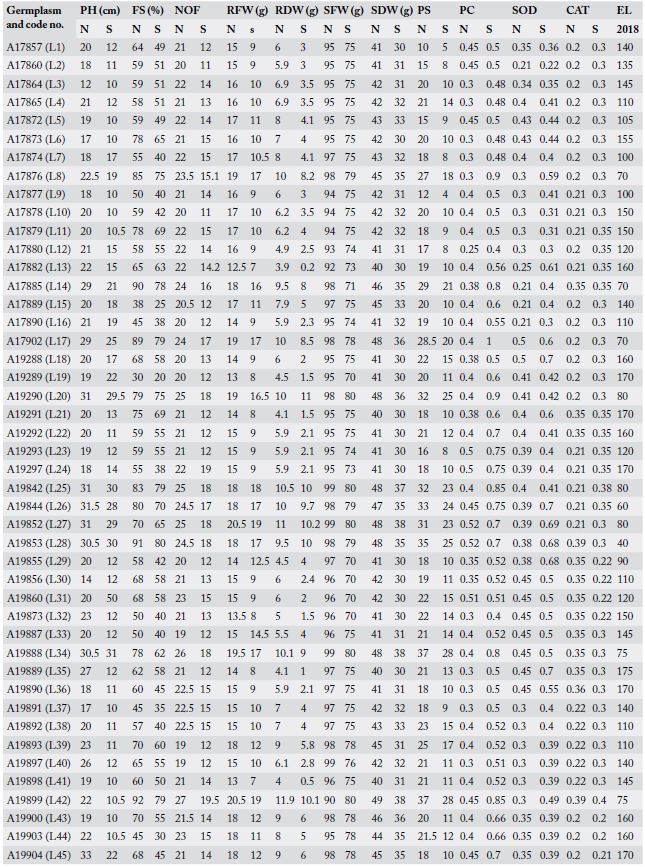Screening of Tomato (Lycopersicon esculentum Mill.) Germplasm for Chilling Stress Tolerance during Two Growing Seasons
Kokab Nazim1*, Asghari Bano1 and Ghulam Jellani2
1Department of Biosciences, Faculty of Basic Sciences, University of Wah, Pakistan; 2National Agriculture Research Center, Islamabad, Pakistan.
Figure 1:
Dendrogram of 45 tomato genotypes under two growing seasons in cold stress environments.
Table 3:
Mean squares of different traits in 45 tomato genotypes during 2018 under normal and cold stress.
SOV: sources of variations; df: degrees of freedom; PH: plant height; SFW: shoot of fresh weight; SDW: shoot of dry weight; RFW: root of fresh weight; RDW: root of dry weight; PS: plant spread; FS %age: fruit set percentage; F/P: fruit percentage; SOD: superoxide dismutase; CAT: catalase.
Table 4:
Mean squares of different traits in 45 tomato genotypes during 2019 under normal and cold stress.
* - P<0.05, ** - P<0.01 and n.s. - not significantly different at P=0.05. SOV: sources of variations; df: degrees of freedom; PH: plant height; SFW: shoot of fresh weight; SDW: shoot of dry weight; RFW: root of fresh weight; RDW: root of dry weight; PS: plant spread; FS %age: fruit set percentage; F/P: fruit percentage; SOD: superoxide dismutase; CAT: catalase.
Table 5:
Mean values of comparative analysis of Lycopersicon esculentum Mill. for the year 2018 under normal and stressed conditions.











